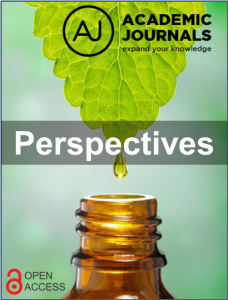S. A. Teruya and S. Bazargan-Hejazi
Charles R. Drew University of Medicine and Science
DOI: https://doi.org/10.5897/PP2018/0010
Copyright © 2018 Author(s) retain the copyright of this article.
This article is published under the terms of the Creative Commons Attribution License 4.0.
In our 2018 retrospective analysis [1], we found an increase since 2005 in the number of African-Americans in a low-income area of Los Angeles County who came to the emergency room with Congestive Heart Failure (CHF) exacerbations, or worsening heart failure symptoms and conditions. This increase is alarming when we consider that there has been a County-wide decrease in such occurrences among the general population over the same period. In this perspective, we consider some potential causes, and actions which may help mitigate this disparity.
These African-Americans patients with worsening conditions lived in Los Angeles Service Planning Area (SPA) 6, which consists of relatively low-income neighborhoods with predominantly racial-minority residents. Based on statistics, living in SPA 6 means that you are more likely to suffer from worsening heart failure symptoms and conditions than if you lived in Beverly Hills, for example. Your condition is also likely to be severe enough to require hospitalization after being seen in the emergency room, more likely than if you lived in any other part of the County. Severe heart problems in SPA 6, in fact, seem to affect both the young and the old; 56% of affected patients were 35 to 64 years of age, compared to a majority (58%) of such heart patients being 65 and older in Los Angeles County in general.
What is likely to cause this difference in health and health outcomes in SPA 6, compared to the rest of Los Angeles County? Our data indicates that regardless of race, younger people as well as older adults are affected. We could find no obvious medical conditions or risks common to both young and old CHF patients that might explain this. This suggests broad, structural causes such as differences in accessing care, or in the quality of care received, compared to other parts of the County. It may also perhaps indicate a need for things such as better preventative care in SPA 6.
Our findings suggest in fact, that economic factors, and the choices and decisions that result, can contribute to worsening heart failure symptoms and conditions in this area, which often require hospitalization. For example, a patient’s condition may worsen because of having to miss appointments or treatment due to the lack of reliable and convenient transportation, even to the pharmacy. Many families in SPA 6 may not own a car, and friends and family often cannot afford to take time off from work. Taking public transportation in Los Angeles is often seen as challenging by able-bodied people, and is perhaps practically impossible for those with serious heart problems or other illnesses and conditions. CHF patients may also simply feel too weak or sick to travel to preventative care, to routine and follow up appointments, or even to the pharmacy. They are, of course, unlikely to be able to drive themselves to these places, much less take public transportation.
It is also important to remember that while many or most in this area have public or private health insurance, most care and treatment is not free. For low-income families, even modest co-payments or fees may be unaffordable, or enough of a concern so as to deter the patient from a needed appointment or service. A patient may even forego his or her prescriptions because of their cost, and/or the difficulty in having them filled. For low-income patients, eliminating co-pays and fees for services and prescriptions may increase medication and appointment compliance, and encourage more healthy behaviors. However, many will still suffer from the lack of convenient and low- or no-cost transportation to and from appointments and treatment, and in getting their prescriptions filled.
We recommend future research on ways to enlarge, and encourage participation in, preventative healthcare in SPA 6, and on practical ways to increase access to care and treatment for patients with congestive heart problems. Future studies may also reveal medical and other risk factors responsible for the increasing number of African American patients with worsening heart failure symptoms, which also seems to disproportionately affect both the young and old, regardless of race, in this area.
Reference:
[1] Lam VQ, Bazargan-Hejazi S, Pan D, Teruya SA. (2018) Health disparities in patients with congestive heart failure exacerbations in Los Angeles county. Emerg Med Inves.







Discussion about this post